In an era where consumers are increasingly drawn to distinctive packaging designs, metallic paper stands out as a material of choice for many brands. Its reflective sheen, luxurious appearance, and functional benefits make it an attractive option across various industries. From shimmering gift boxes down to stylish coffee bags, in recent times, metallic paper has gained significant presence on retail shelves worldwide from being confined to niche applications.
With increased competition, brands look for innovative ways to get noticed and communicate value. Metallic paper fits into this very strategy of brands, offering not only an aesthetically pleasing presentation but tangible benefits in terms of product protection and brand storytelling. From visual impact to functional performance, metallic paper is carving its essential role in modern packaging design.
Understanding Metallic Paper
What is Metallic Paper?
Metallic paper is a type of paper-based substrate coated or laminated with fine metal particles—commonly aluminum—to achieve a reflective, metallic finish.
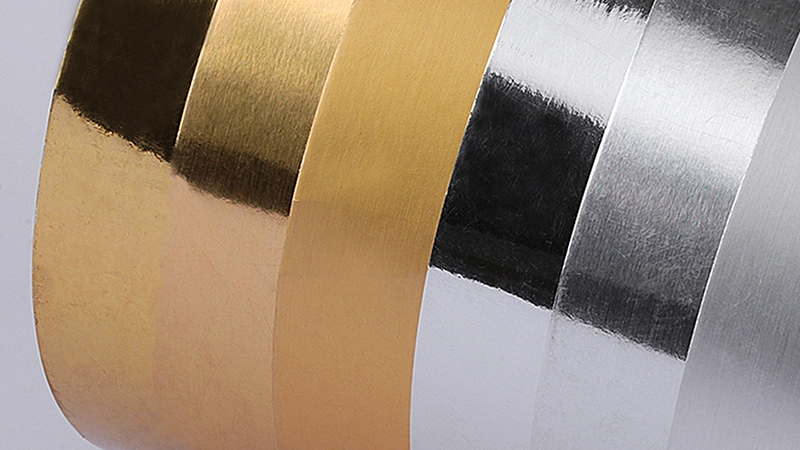
Unlike pure metal foils, which are ultra-thin sheets of metals, metallic paper combines the flexibility and workability of paper with the luster of a metallic surface. This hybrid nature makes it easier to print on and shape, while still delivering that eye-catching glow associated with precious metals.
In return, it gives a lot in terms of packaging material-versatility, able to mirror the look of foil without many of the associated handling issues. From subtle sheens that suggest sophistication to bold, mirror-like finishes that command immediate attention, metallic paper can range across a wide gamut. The adaptability lets brands choose how much shine and color best aligns with their image.
The Composition and Manufacturing Process
Creating metallic paper involves a precise process. High-quality base paper—often sourced from sustainably managed forests—is selected for its durability, smoothness, and compatibility with metal coatings. This paper is then coated or laminated with a metallic layer, typically aluminum, applied using specialized machinery to ensure even coverage and consistent reflectivity.
The thickness of the metallic layer can vary. Some processes deposit an ultra-thin metallic coating, while others involve laminating a metallic film onto the paper. Quality control is essential: achieving a uniform sheen, avoiding streaks, and ensuring adhesion all require careful calibration. Modern manufacturing technologies help maintain consistent results, guaranteeing that each sheet of metallic paper meets the desired aesthetic and performance standards.
Available Foil Colors and Finishes
While classic silver and gold finishes are timeless, the metallic paper options of today range far beyond those traditional hues. Today, colors available to brands run a wide gamut, including rose gold, copper, bronze, and even bright metallic blues, greens, or purples. Holographic finishes add a dynamic, shifting rainbow effect that catches the light from many angles.

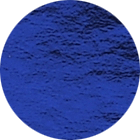

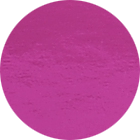
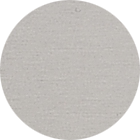
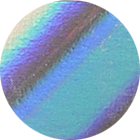
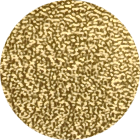
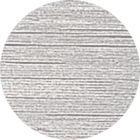
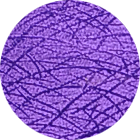


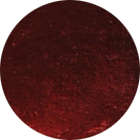



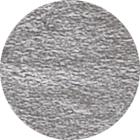
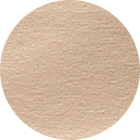
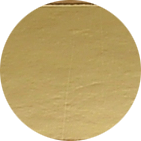
From tone to finish, this range of metallics allows designers to innovate. A skincare brand may use rose gold to denote modern elegance, while a tech company could use a chrome-like silver that denotes innovation. By playing with color and sheen, brands can align packaging aesthetics more closely with their unique visual identities and messaging.
Advantages of Using Metallic Paper in Packaging
Metallic paper has its aesthetic and functional benefits that make it a very viable option for companies looking to make an indelible mark in the following ways:
Aesthetic Impact: The reflective surface draws the eye, setting products apart in a sea of standard packaging. A metallic sheen suggests luxury and craftsmanship, encouraging consumers to associate premium qualities with the product inside.
Functional Benefits: Metallic coatings can serve as barriers against moisture, oxygen, and UV light, helping maintain product quality and freshness—especially important in sectors like food, beverage, and cosmetics.
Brand Differentiation: Metallic paper transforms packaging into a brand statement. Unboxing experiences become more memorable, fostering positive associations and boosting repeat purchases. The material’s inherent quality signals that a brand values presentation and cares about details.
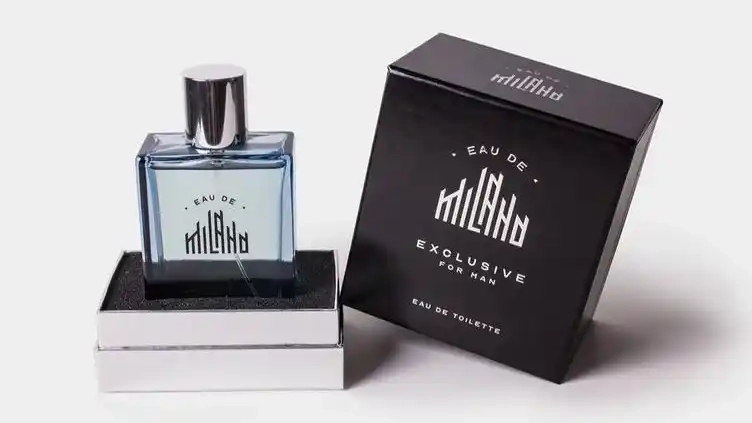
For businesses seeking to elevate their brand image, metallic paper provides a powerful tool. By combining beauty and function, it turns ordinary packaging into a standout marketing asset.
Applications of Metallic Paper Across Industries
Metallic paper finds applications in a range of sectors, each benefiting from its unique properties:
Luxury Goods Packaging: Most high-end brands in fashion, jewelry, and accessories resort to metallic paper to underline exclusivity. Be it a designer handbag wrapped in a matte gold sleeve or a watch box lined with silver foil, such a choice increases perceived value and makes consumers associate the product with prestige.
Food & Beverage: Metallic paper’s barrier properties help preserve flavor and extend shelf life in products like tea, coffee, and confections. The reflective finish projects a sense of quality and indulgence—think gourmet chocolate bars wrapped in gleaming wrappers or specialty teas presented in elegant metallic pouches.
Cosmetics & Beauty: From perfume boxes to skincare kits, metallic paper packaging underscores luxury and exclusivity. Shimmering boxes and tubes promise a premium experience, resonating with consumers who value indulgence and self-care.
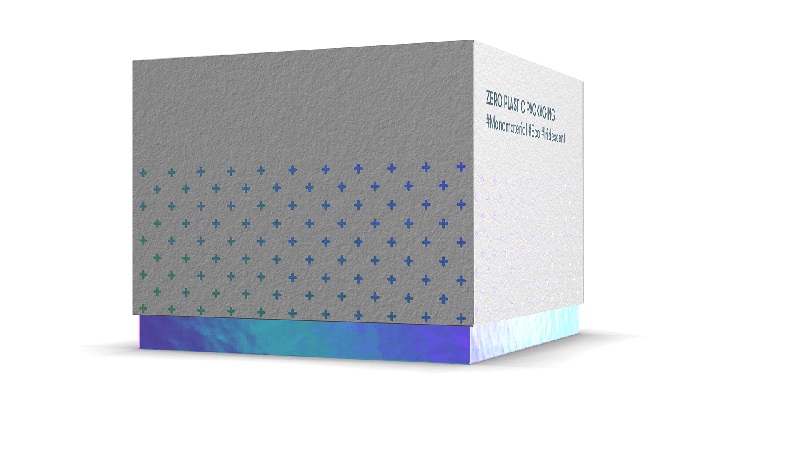
Electronics: In a market where innovation is key, metallic paper signals modernity and technical prowess. Sleek metallic packaging for electronics can communicate cutting-edge design, reassuring buyers that they’re investing in state-of-the-art products.
Promotional Materials: Metallic paper would also work well for special-edition merchandise, event invitations, or holiday gift packaging. It makes occasions more special and helps brands create memorable interactions with their customers in colorful detail.
In every industry, metallic paper is both functional and an emotional differentiator that reinforces brand narratives and enhances consumer perceptions of quality.
Printing Techniques & Finishes on Metallic Paper
Printing on reflective surfaces poses unique challenges, but the right techniques yield striking results:
Suitable Printing Methods: Offset and UV printing can achieve crisp images and text on metallic paper. Digital printing has also advanced, making short-run or personalized packaging more accessible. It’s essential to ensure that inks bond well with the metallic coating and that designs are optimized for reflectivity.
Finishing Options: Embossing and debossing add the tactile dimension, raising or recessing logos and patterns that catch the light differently. Varied spot varnishes, gloss coatings, and soft-touch finishes can draw out particular elements of the design or provide interesting contrasts. For example, a glossy logo on a matte metallic background will instantly attract the eye.
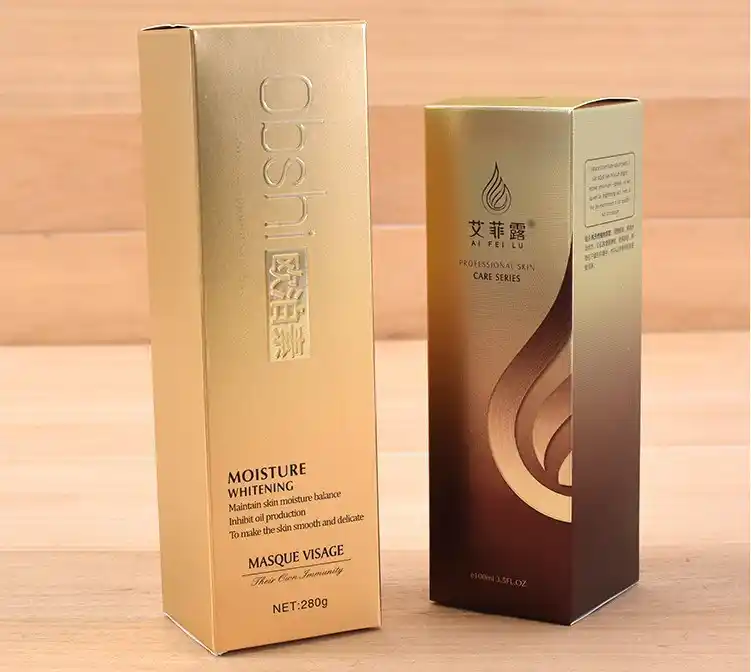
Color Management: On metallic substrates, colors may appear differently than on matte surfaces. Testing is key to ensure the final printed result matches the brand’s intended look. Printers experienced in metallic surfaces can provide valuable guidance on ink selection and design tweaks.
When done well, printing and finishing on metallic paper produce packaging that doesn’t just look good—it captivates and engages, adding layers of sensory pleasure to the customer experience.
Trends in the Market for Metallic Paper
The packaging landscape continues to evolve, and metallic paper is at the forefront of exciting trends:
Customization and Personalization: Digital printing enables companies to produce customized metallic packaging for limited-edition runs, personalized gifts, or influencer collaborations, adding exclusivity and depth to brand storytelling.
Holographic and Iridescent Effects: Moving beyond simple metallic finishes, holographic patterns and multi-tonal sheens are becoming increasingly accessible. These complex reflective effects will bring movement and intrigue to a product, helping it pop on a crowded shelf.
Sustainable Innovations: As brands and consumers prioritize environmental responsibility, suppliers are exploring more sustainable metallic coatings, greener adhesive systems, and improved recyclability. This aligns with evolving consumer expectations and industry standards.
Staying current with these trends positions brands to offer packaging that feels modern, relevant, and attuned to shifting consumer values.
Environmental Impact and Sustainability of Metallic Paper
One very common question associated with metallic finishes is the environmental implications of the same. The eco-friendliness of metallic paper depends upon production methods, coatings, and local recycling capabilities. Many times, metallic paper can be recycled just like other coated papers, assuming the metallic layer is thin and does not contain a high percentage of contaminants.
Generally speaking, metallic paper is much more environmentally friendly compared to plastic laminates or foil-only constructions. More responsible suppliers might use certified papers, water-based adhesives, and minimal coating thicknesses. Brands focused on sustainability can request certifications regarding particular products, the percentage of recycled content, and even adherence to specific regulations.
Not completely devoid of environmental concerns, metallic paper can be part of a responsible packaging strategy, especially when combined with smart design and open communication regarding recyclability and eco-friendliness.
Cost Analysis: Metallic Paper vs. Traditional Packaging Materials
Metallic paper generally carries a higher upfront cost than standard paper or plastic materials, reflecting the complexity of production and premium look.
| Specialty Paper Type | Average Cost Per Sheet | Key Features | Aesthetic |
|---|---|---|---|
| Metallic Paper | $0.50 - $2.00 | Reflective, high-quality finish | High (luxury) |
| Glossy Paper | $0.30 - $1.50 | Vibrant colors, glossy surface | Medium-High |
| Matte Paper | $0.20 - $1.00 | Non-reflective, text-friendly | Medium (subtle) |
However, evaluating cost in isolation may overlook its potential value:
Perception of Quality: High-quality packaging often justifies a higher product price. If metallic paper enhances brand reputation and encourages repeat purchases, the investment may pay off over time.
Marketing & Differentiation: Metallic paper can serve as a brand asset, reducing the need for other marketing expenditures. By catching consumer attention and boosting brand recognition, it contributes to a more efficient marketing spend.
Long-Term ROI: For products aiming to position themselves as premium, the cost difference may be marginal compared to the value gained. Over time, the brand’s enhanced image could drive loyal customer relationships and word-of-mouth referrals.
Balancing cost against brand goals, consumer expectations, and potential sales uplift helps determine if metallic paper is a worthwhile investment.
Challenges and Considerations When Using Metallic Paper
While metallic paper offers numerous benefits, it’s essential to acknowledge potential hurdles:
Technical Adjustments: Printing on metallic surfaces may require specialized inks or coatings. Certain designs may need rethinking to ensure legibility and accurate color representation.
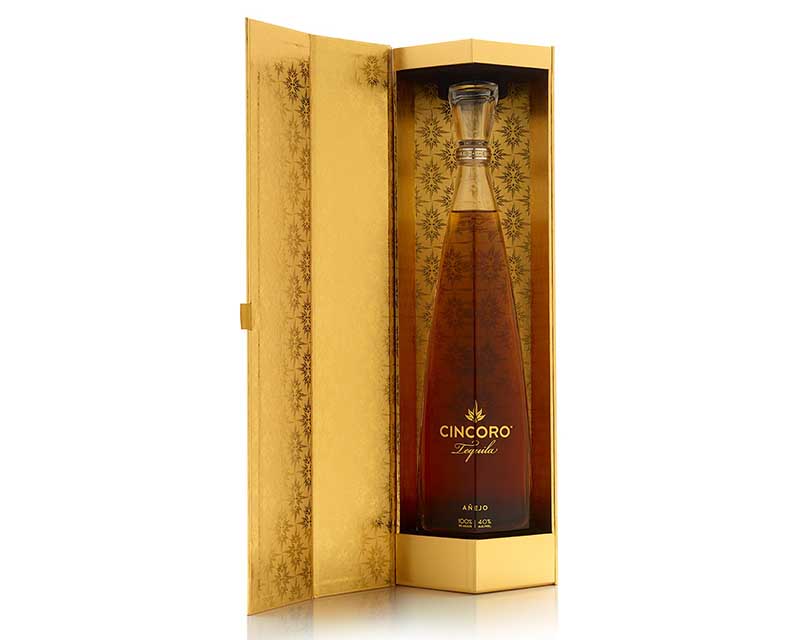
Machinery Compatibility: Some packaging lines may need adjustments to handle metallic materials. Slitting, folding, or gluing processes must account for the paper’s unique properties.
Testing and Quality Control: Before committing to large runs, pilot testing is advisable. Mock-ups help confirm that the final result matches expectations in terms of aesthetics, durability, and functionality.
By proactively addressing these challenges, brands can ensure a smoother integration of metallic paper into their packaging strategies.
How to Choose the Right Metallic Paper for Your Packaging Needs
Selecting the ideal metallic paper involves thoughtful consideration. Before jumping into a supplier partnership, brands should evaluate several key factors:
Key Factors to Evaluate
- Weight & Thickness: Heavier stocks provide more durability, essential for protective or premium packaging. Lighter stocks may be suitable for promotional flyers or inner linings, but sturdier materials lend a sense of quality to outer packaging.
- Finish & Texture: High-gloss finishes project modernity and boldness, while matte or brushed metallics convey subtle elegance. Textured surfaces, embossing, or pearlescent sheens add complexity and depth.
- Barrier Properties: Consider how well the metallic paper blocks moisture, oxygen, or UV light. Sensitive products, such as chocolates, teas, or certain cosmetics, benefit from better barrier properties.
- Printing & Finishing Compatibility: Ensure the chosen metallic paper works seamlessly with your preferred printing techniques and post-press finishes. Consult printers and suppliers to avoid costly misalignments.
- Brand Identity Alignment: Does the metallic color and finish reflect your brand’s personality? A cutting-edge tech firm might opt for chrome-like silver, while a vintage-inspired brand might choose a warm copper hue.
A Practical Checklist
- Identify Product Requirements: Is the product temperature-sensitive, perishable, or luxury? Determine what attributes your packaging must have—durability, moisture resistance, or high aesthetic appeal.
- Evaluate Supplier Capabilities: Research suppliers known for consistent quality and technical support. Request material specifications, certifications, and sustainability details.
- Request Samples: Examine samples in natural and artificial lighting. Test print your designs on the samples to confirm color accuracy and print clarity.
- Check Sustainability Credentials: If eco-friendliness is a priority, confirm the recyclability of the chosen metallic paper and inquire about responsible sourcing.
- Balance Budget & Brand Goals: Weigh the cost difference against the potential branding benefits, increased sales, or improved product perception.
By following this structured approach, brands can confidently choose a metallic paper solution that supports both their creative vision and practical requirements.
Frequently Asked Questions About Metallic Paper
Q: What are the benefits of using metallic paper for packaging?
A: Metallic paper enhances visual appeal, improves shelf presence, and can offer functional benefits like moisture and light barriers. This combination of looks and performance helps elevate brand perception and product quality.
Q: Can metallic paper be recycled?
A: In many cases, yes. Metallic paper is often recyclable, depending on local recycling capabilities. It generally has a lower environmental impact than plastic laminates or pure metal foils.
Q: How is metallic paper different from foil?
A: Metallic paper is essentially paper coated or laminated with a thin metal layer, while foil is a pure metal product. Metallic paper is often easier to print on, more flexible, and can be more readily recycled.
Q: What industries commonly use metallic paper?
A: Food and beverage, cosmetics, electronics, luxury goods, and promotional materials are common sectors. Each finds unique value in the material’s protective and aesthetic qualities.
Q: Is metallic paper safe for food packaging?
A: Certain types of metallic paper are designed for direct food contact. These meet regulatory standards and help preserve freshness by providing a barrier against moisture, oxygen, and light.
Conclusion: Unlocking the Potential of Metallic Paper
Metallic paper seamlessly blends beauty and functionality, positioning it as an ideal choice for brands seeking to captivate consumers. By understanding what metallic paper is, how it’s made, and its diverse applications, businesses can unlock a packaging material that stands apart in both form and function.
From luxury chocolates to cutting-edge electronics, metallic paper offers a premium touch that resonates across industries. Thoughtful consideration of sustainability, costs, and technical constraints ensures that the chosen material aligns with brand values and long-term goals. As trends evolve and consumers grow more discerning, embracing metallic paper can help brands remain at the forefront of innovative, sustainable, and memorable packaging experiences.
Contact for a Free Consultation!

